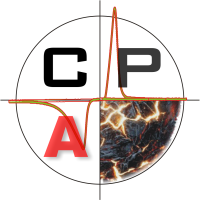
Journal of
Corrosion and Anticorrosion Protection


 Volume V, Issue 1, 2010
Volume V, Issue 1, 2010
 Home
Home------------------------------
 About Us
About Us------------------------------
 Authors Guide
Authors Guide------------------------------
 Subscription
Subscription------------------------------
 News
News------------------------------
 Contact Us
Contact UsContent



Jozsef JUHASZ ![]() , Vasile HOTEA, Elena POP, Gheorghe IEPURE, Aurica POP.
, Vasile HOTEA, Elena POP, Gheorghe IEPURE, Aurica POP.
Solutions and clean technologies for processing brasses and bronzes
Abstract: The technological process of obtaining raw copper, brass and bronze is a simple process in which basic operation, smelting nonferrous alloys melting is done in rotary kiln. Other machines are used for cooling the gas flow technology and retention of zinc oxide powder and tin in the oven resulting from oxidation reactions of zinc and tin that are part of the raw material supply of the oven. By using filter bags to obtain a clean technology, environmental clean emissions. The basic principle is the use of filter bags woven membranes, permeable to gases, but will retain the dust.



Liana ANICAI, Aurora PETICA
Surface treatments for Al and its alloys based on transitional metals
and rare earth compounds with anticorrosive characteristics
Abstract: The present paper presents several experimental results regarding the use of chemical conversion procedures onto Al based metallic substrates involving solutions based on transitional metals compounds (hexavalent Mo and W) and/or rare earth ones (Ce). These methods are among the most recent ones and the reported results especially from corrosion protection view points are very promising, so that they might be really seen as consistent alternatives to replace the classical chromate based technologies. A brief description of conversion procedures, as well as of some characteristics, from appearance, composition, morphology view points, are presented. To evaluate corrosion protection performance, electrochemical methods, such as: potentiodynamic polarization curves and EIS in 0.5M NaCl and accelerated laboratory tests, respectively: salt mist test for 240 hours and cyclic damp heat for 56 cycles, have been performed. It has been evidenced the synergetic effect of binary systems such as: Ce-Mo, Ce-W, materialized by a halving of corrosion current (e.g. 0.2 mA/cm2 for Mo based conversion against 0.1 mA/cm2 for Ce-Mo one) and Epit increase by about 100 mV. According to the salt mist test, the best corrosion protection was evidenced in the order: Al/Ce-Mo > Al/ Mo > Al/Ce-W. The obtained results recommend these conversion coatings as potential replaces of chromate ones at industrial level, mainly for normal exploitation conditions and temperate climate.



V.V.PARSUTIN ![]() , N.S. SOLTOIAN, A.V.KOVALI, G.F.VOLODINA, V.I.LOZAN, O.A.BOLOGA
, N.S. SOLTOIAN, A.V.KOVALI, G.F.VOLODINA, V.I.LOZAN, O.A.BOLOGA
Peculiarities of inhibiting calcium gluconat corrosion of Ct.3 steel in water
Abstract: The process of steel Ct.3 corrosion in clean water and water, containing various quantities of calcium gluconat, has been investigated by gravimetric, electrochemical and physico-chemical methods (UV spectroscopy, thermogravimetry, roentgenophase analysis, atom-absorption spectroscopy). It is shown, that adsorption is a primary process, causing the shift of a stationary potential to the negative side and corrosion rate decreases in the first hours of the test. Only after 24 hours, and more particularly after 48 hours of sample keeping in water, phase changes on the metal corroding surface, leading to the corrosion process stabilization became noticeable. Suggestions on the process mechanism, including complexing with participation of the gluconat and iron two- and threevalent ions are expressed.



T. NEMEŞ, R. CUIDIR, C. NEMEŞ, V. NEDERIŢĂ
The integrated monitoring system used in the Olt river basin – Sibiu county
Abstract: This paper presents the partial synthesis of the water quality in the Olt river basin – Sibiu County by using the Integrated Water Monitoring System in Romania (SMIAR). 483 km of river were monitored, structured into 25 sections, to obtain coherent and complete information on the ecological and chemical state of this river basin segment.The processing of physic-chemical and biological samples analysis results allowed the river segments to be classified into categories and quality classes. The conclusion was drawn that only about half of the studied segments meet reference objectives.
 Year
Year
|2010||2009|
|2008|
|2007|
|2006|
The Journal of Corrosion and Anticorrosion Protection is edited by S.C. BETAK S.A.
in collaboration with Technical University of Cluj-Napoca, Romania